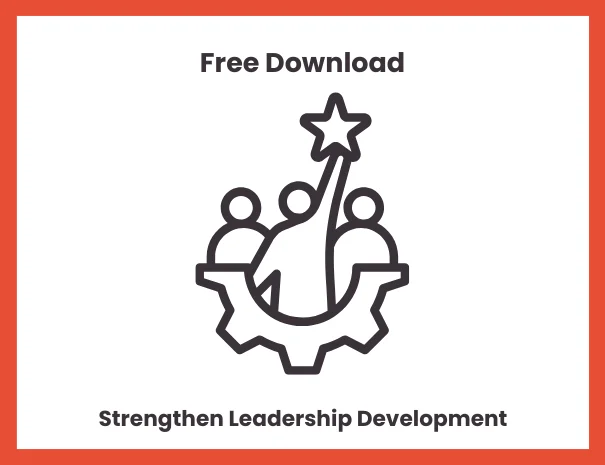Free Leadership Development Plan Example by Risely
Free Download
Leadership Development Plan Example

By using this Leadership Development Plan Example, you will
- Uncover the cost of underdeveloped leadership development programs
- Get a ready-to-use template for creating personalized development plans
- Access practical examples of skill-based development activities
- Discover the step-wise framework to create leadership development plans aligned with business goals
More about the Free Leadership Development Plan Example
Leadership development often feels like navigating without a map. While organizations know they need strong leaders, creating structured development plans that actually work remains a challenge.
What is a Leadership Development Plan?
A leadership development plan is a structured roadmap that outlines how leaders will develop specific skills, competencies, and capabilities over time. It bridges the gap between current capabilities and desired leadership outcomes through targeted development activities and clear progress metrics.
Why do you need this example?
Many leadership development initiatives fail because they lack structure and clear direction. Our example shows you exactly how successful organizations approach leadership development, from initial assessment to measuring progress. It takes the guesswork out of creating effective development plans.
How can you use this example?
Whether you’re developing future leaders or enhancing current leadership capabilities, this resource provides practical guidance every step of the way. The included template makes it easy to create personalized development plans that align with both individual aspirations and organizational needs.
Plus, there’s more. We’ve included expert insights on common pitfalls to avoid, recommendations for development activities, and guidelines for measuring success. The template is designed to be flexible enough to adapt to different leadership levels while maintaining focus on concrete outcomes.
Download the free leadership development plan example today and transform how you approach leadership growth!
Frequently Asked Questions
Leadership development is crucial for organizational success as it builds a strong leadership pipeline, reduces talent gaps, and improves business performance. Effective leadership development ensures continuity in key positions, enhances employee engagement, and drives innovation. It helps organizations adapt to changing business environments while maintaining competitive advantage through stronger team performance and better decision-making.
A leadership development plan is a structured roadmap that outlines how an individual or organization will build leadership capabilities over time. It includes specific skill development goals, targeted learning activities, timeline for achievement, and progress metrics. The plan bridges the gap between current capabilities and desired leadership competencies through systematic development approaches.
Our example demonstrates how successful organizations structure their leadership development initiatives. It showcases practical goal-setting approaches, skill development activities, progress tracking methods, and measurement metrics. The example provides real-world applications of leadership development best practices, making it easier to create effective plans for your organization.
This comprehensive resource includes a detailed leadership development plan example, a customizable template and best practices guide. You’ll get practical examples of development activities, implementation guidelines, and expert recommendations for creating effective leadership development plans.
Leadership development programs are structured initiatives designed to enhance leadership capabilities across an organization. They combine various learning methods including training, coaching, mentoring, and practical experience to develop essential leadership skills. These programs typically focus on building competencies in areas like strategic thinking, people management, decision-making, and communication.
Leadership programs often fail due to lack of clear objectives, poor alignment with business goals, insufficient follow-through, and inadequate measurement of outcomes. Other common reasons include generic approaches that don’t address specific organizational needs, lack of senior leadership support, and failure to provide practical application opportunities.
Successful leadership development programs share key characteristics: clear alignment with business objectives, personalized development approaches, strong senior leadership support, and regular progress measurement. They combine theoretical learning with practical application, provide ongoing support and feedback, and create clear connections between development activities and real-world leadership challenges.
